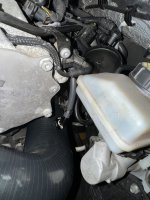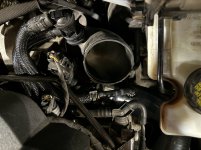Bottom line if you’re not tracking the car at all then any kind of plate is a dumb solution as you’ll then be putting (light) pressure on the crankcase at all times you’re out of boost. There are multiple people running the MK8 basic retrofit pushing 450-550whp with no problems on the street. I suspect they’ll need the Venturi for track use though like
@yakev724 .
I beat the shit out of my car on track for 20 min at a time and have had zero issues in basic or full retrofit configuration (with stock TIP). If you’re not seeing 260F+ oil temps you’re not really stressing the car that much (and assuming you’re not testing the strength of the stock bottom end parts - not really stressing in the same way).
There’s really nothing else to it. There are countless people who have issues with any of the plate systems. Knowing what I know now, it’s likely correlated to the TIP they’re running not being a good match for whatever other clusterfuck of a setup they have. The TIP vacuum testing will possibly be even more relevant for people with plates because there is no regulator to dial down the vacuum.
What’s a lot harder to capture is the fact that the BMS TIP is putting 0.20psi on the crankcase for about 10 seconds every time you’re taking off from a stop. Any plate system will be worse because at least the OEM PCV gets to start out at -0.8 to -0.9psi. Plates will all be positive at idle with no volume of vacuum storage to help.
If/when it’s released, I’d only really consider the Radium plate. They actually do real R&D, not just copy the looks of TCR stuff and sublet to the lowest bidder on AliExpress.
(This isn’t meant to be taken personally- but it’s frustrating knowing that some degree-less idiot former mechanic has done more R&D for the PCV system on this platform than any of the aftermarket parts companies. The PCV thing is just part of it. Don’t get me started on oil coolers, bump-steer, or CSF radiators

Like really - HOW does any aftermarket company not see the hump inside the OEM TIP and not think “Gee, maybe that’s there for a reason?”)
/rant


